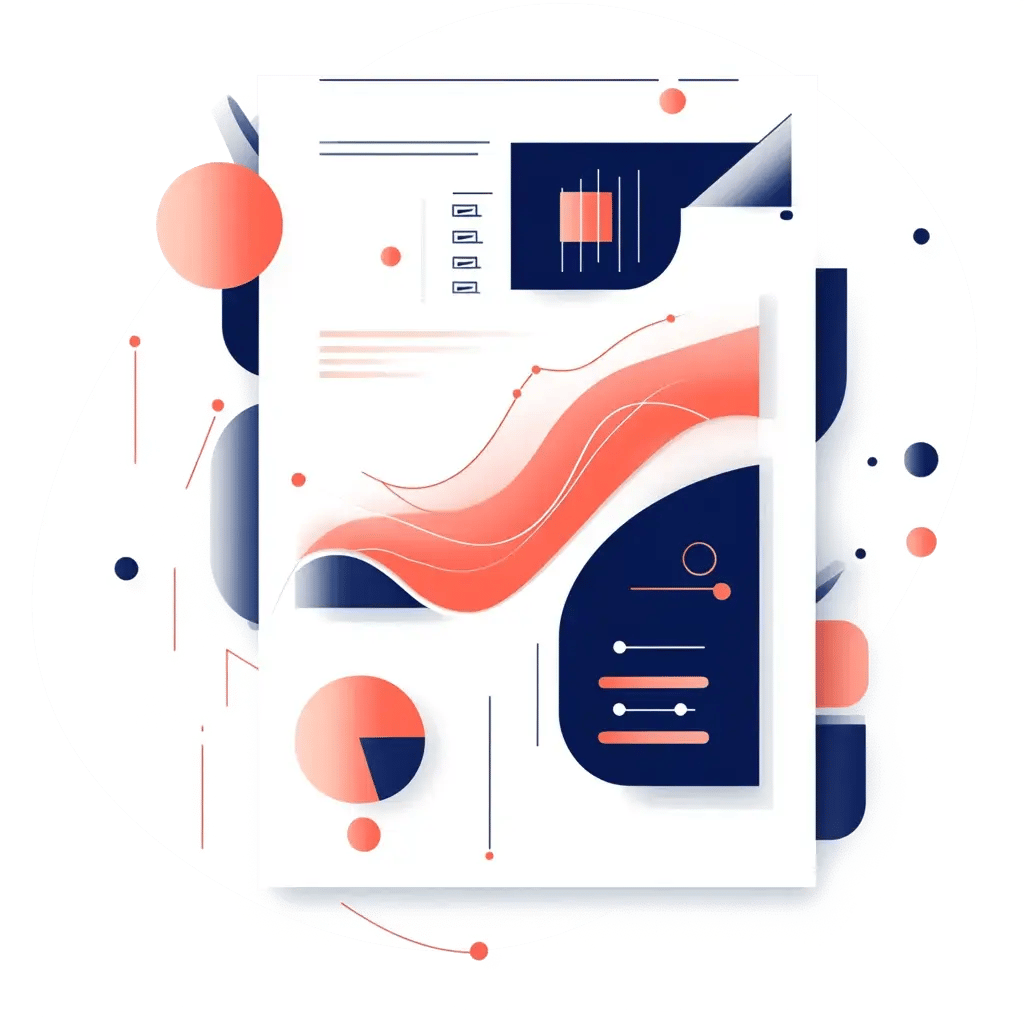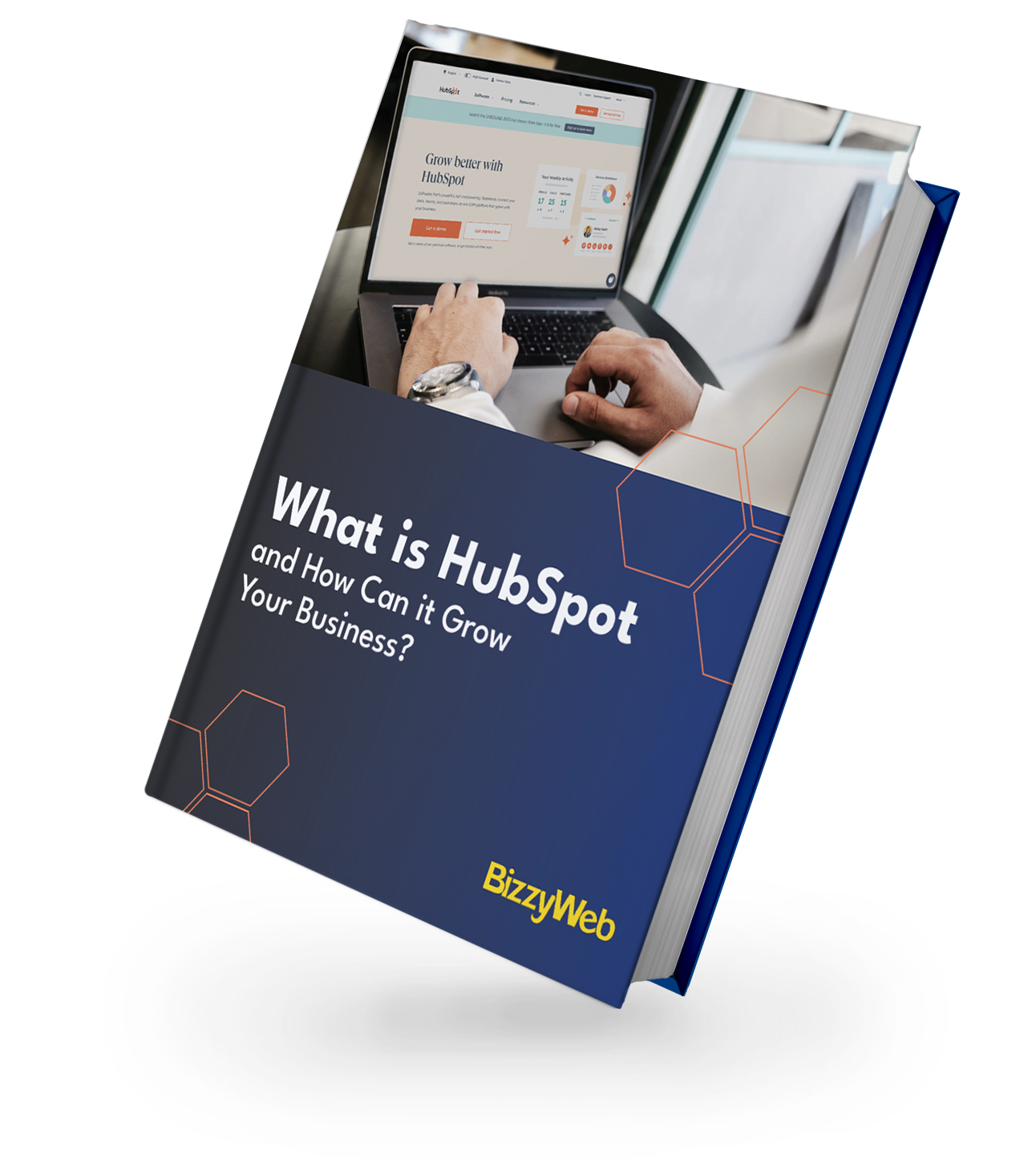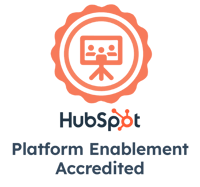Business Growth as Sweet as Honey
Sales is always looking for ways to get more. More pipelines, more deals and more revenue. While HubSpot can’t take over the actual selling (that’s what the sales team is paid the big bucks for), it CAN supercharge their efforts, taking a lot of the menial labor off their hands, speeding up their processes, and letting them focus on what they do best - sell.
With the constant pressure to find more opportunities, close deals faster and generate higher revenue, modern sales teams face many challenges. There is a lot that goes into the sales process today, and with growing demands for personalized outreach, sales teams are often bogged down by admin work. This is where Sales Hub comes into play by providing a single place for sales to not only track and manage their efforts, but to accomplish those tasks as well.
Related Content: What is Sales Enablement, and Can HubSpot Help?
So, What Is Sales Hub?
HubSpot Sales Hub gives your sales team access to the tools within the platform that allow them to manage their actual sales outreach - be that through calls, emails, SMS or social media. But it also gives them the necessary information and insights into their prospects' behaviors to enable personalized conversations that convert prospects into customers.
Basically, Sales Hub is your database, sales enablement platform, outreach tracker, organizer, enabler and reporting tool all rolled into one.

Structure: Deals and Pipelines
The Structure components of Sales Hub are the building blocks: the pieces that all the other parts interact with and use to deliver personalized, automated and higher-converting outreach.
Deals
If you’ve worked with another CRM before, you may have called these Opportunities or something similar, but they are the record of a sales conversation, from interest through to purchase. They hold all the essential information about that opportunity, from its potential close date to the amount of revenue it is worth. You can customize the information you want to gather about your deals by adding custom fields to hold anything from a Google Drive Link to dropdowns to map their existing tech stack.
Now, some contacts and companies might only have one, or they could have several deals, depending on how your customers buy from you. But, no matter how your sales process functions, you’ll have an accurate record of each purchase or sale made by that contact or company.
Pipelines
Pipelines are to deals as highways are to cars. Your deals will move along your pipeline through stages, which are steps that you define as waypoints in your sales process from start to finish, providing you with reporting to understand where your deals are stalling out or dying. You can add in steps such as Demo Scheduled, Contract Sent, or Items in Cart - whatever steps will best match the sales process your contacts go through.
You are able to not only control which pieces of information are required at each stage - stopping reps from skipping steps or missing necessary information - but you can send automated follow-up emails and notifications to your reps or the contacts involved in the deal. This includes the classic abandoned shopping cart email to a consumer or rep, or a reminder to your rep that a contract was sent seven days ago and they should reach out asap.

Time Savers: Documents, Snippets, Templates, and Playbooks
Time Savers - these are your pre-written and pre-designed components that let your sales team focus on the personalization parts of their outreach, while providing marketing-approved messaging to contacts.
Documents
Many sales teams waste a lot of time searching in marketing docs and drives for pieces of content, be it blurbs of text or one-pager PDFs. Instead of wasting time searching, in Sales Hub, your team can quickly insert an attachment (Documents) that provide value to the lead and also give your sales team tracking information. Additionally, the security within HubSpot allows your sales team to share private, sensitive information - like a proposal - with confidence.
Snippets
Snippets are often underutilized but can be a lifesaver when saving time. Snippets are functionally a text blurb that can be inserted just about anywhere you can type within HubSpot - be it emails, notes, conversations or logging activities like calls or meetings. A snippet can be used to add a sentence or paragraph - for example, in an email, inserting a blurb that has links to case studies relevant to the industry of the prospect they are messaging or the answer to a common objection, complete with links to the fantastic one-pager marketing already put together for just that purpose. Your imagination is really the only limit when it comes to Snippets and saving your team time in typing the same sorts of messages over and over or missing out on using the approved copy provided by leadership or marketing. Sales can select from pre-designed snippets and drop them into their communications with leads effortlessly.
Templates
What happens when you take a snippet and expand it to be an entire email? You get templates. A template is a fully structured email that pulls right from the contact and associated company or deals to add personalization elements while reducing the time the rep spends writing the same old email every time. Templates are great when you want to expand beyond a single sentence or paragraph, but want to provide a fully structured email. You’ll still have the ability to personalize the email with personalization elements and allow the sender to make edits before sending. However, the template functionality allows you to save time and use consistent messaging by having a jumping-off point for frequent emails - such as meeting reminders.
One of the significant parts of templates is the ability to add dynamic personalization tokens - pick from any field in your CRM and have it filled in to match the record of whoever receives the email. You may want a single template for the whole team to use when following up after a missed meeting. With Templates, you can create that email and add a personalization token that automatically adds the meeting link of the sender, so any member of your sales team can use that Template without having to remember to make edits or adjustments before sending, saving hours and hours of work for each and every sales rep.
Playbooks
Playbooks can’t be forgotten when looking at Time Savers either. You can think of them as a pre-built note-taking guideline, which prompts your team to ask the questions they need answers to move their deal along the pipeline and, of course, provide a place to write those notes and connect them directly to the contact and deal so they have all those details and history available right away.
Automation: Sequences and Workflows
If you are looking for a single wow factor that, on its own, can make a night and day difference for your sales team, then automation would be that wow. Automation within HubSpot Sales Hub Pro and Enterprise will give you access to Sequences and Workflows. Both are automation tools that work together and independently to save your team massive amounts of time and energy.
Sequences
Sequences are a series of automated emails and manual outreach tasks combined in any order or structure you see fit: from 10 fully automated emails to only two manual phone calls. You have total control here. These are used typically for 1:1 outreach, usually by Sales (or customer service teams as well), and will use those templates we learned about earlier to send automated content that still feels human.
A sequence can consist of several tasks: be it calls, manual or automated emails, LinkedIn outreach or any other to-do you may want to give your team. You can craft many outreach cadences, changing the steps, timing and levels of automation to best match your audience, the particular campaigns you are working on or just to test out different approaches
Related Content: How to Use Automation to Close Lagging Deals
Workflows
Workflows can also send emails - but you typically want to use that for marketing efforts and use sequences for sales emails. Workflows for Sales can help with things like lead routing, setting follow-up tasks, updating contact information and moving deals along your pipeline based on completing the steps you already decided on without having to ask the sales team to make those changes.
Related Content: 5 Essential HubSpot Workflows to Copy

Measurement: Reporting, Forecasting, and Goals
Measurement is king when it comes to making decisions in sales: from setting goals to identifying teams and reps that need additional support.
Reporting
With Sales Hub, you can access all kinds of reports, including ones that come out of the box to give you an excellent overview of your entire sales process, from meetings and calls to forecasting and revenue generated. But you may need more flexibility; you want to look deeper, get more granular, or just measure something more than what HubSpot gives you immediately. Luckily, you also have access to build custom reports, looking not only at any specific thing, like your contacts or deals but how they interact with one another as well.
You can gather all of your reports onto a dashboard that automatically updates. This gives your sales team one place to go for a reference on deal statuses, new leads and other useful daily data.
Related Content: 5 HubSpot Sales Dashboard Templates to Try
Forecasting and Goals
Forecasting and Goals are your tools for understanding the health of your business, your opportunity for growth, and predicting your revenue outcomes with greater accuracy that you can come to rely on over time. The system will help you to provide concrete numbers that your sales team can commit to achieving grounded in data, history, and the reality of your pipeline.
You will have access to both a standard and a weighted forecast - what these provide are two views of your pipeline, one that looks at all deals at every stage, with the same worth, adding their totals together to give you the value of your pipeline. Weighted forecasts, though, are where it can get interesting. This view takes every deal in your pipeline and adjusts the value based on what stage that deal is in - for example, you have a close rate from your first stage of 10% and a deal in your first stage that is worth $10,000, with your regular forecast, that would add $10,000 to your pipeline, but with a weighted forecast, it would add $1,000. A weighted forecast is a great way to look at your pipeline and potentially have a more accurate estimation of your achievable revenue.

Productivity: Outreach, Prospecting, Leads, and Meetings
The final components of HubSpot Sales Hub are the tools that allow your team to connect with prospects and customers right from within the platform.
Outreach
Your team has options when it comes to connecting with your contacts. They can work from right in their existing inboxes to manage emails for Outlook and Gmail or from directly in the CRM to call, email, SMS, WhatsApp, Messenger and LinkedIn message their contacts. They can respond quickly and efficiently to inbound messages from across many of these channels with a centralized Inbox.
Whether your team is working out of the platform or their inbox, their activity can be tracked and logged back to the CRM: giving managers and other reps a clear picture of activity for easy handoff as needed.
Prospecting
One of the newest additions to the HubSpot platform, the Prospecting workspace gives your team, especially your front-line sales reps, a place to manage their lists for outreach: be it new contacts to reach out to, ones that have been engaged with their outreach, or upcoming meetings and calls. A rep can quickly and easily see not only these lists but also start working through them to make their daily outreach as smooth as possible, look at their upcoming meetings for the day, and keep an eye on the activity of their assigned contacts, striking while the iron is hot and a prospect has just opened an email or visited the website.
Leads
Leads are the other significant new addition to HubSpot Sales Hub. Leads are a way to track the initial conversations and efforts to connect with a contact, ending with a contact either being qualified and thus moved into a deal, an actual opportunity - or disqualified with no further sales outreach for the time being. When a contact enters your lead process, they will automatically be put into a new leads list for your reps, based on ownership and moved along the process automatically from new to attempting when your rep makes a call or sends an email, and then to connected when the contact answers the phone or replies to an email.
As with almost every part of HubSpot, you can adjust this process and steps to match your unique situation, but these default automated stages can be a great time saver for your team and help them prioritize their efforts each day.
And don’t worry about those disqualified leads either; your reps can enter why they are disqualifying that contact and use Workflows to set automatic reminders and follow-up based on the reasons selected, such as Bad timing with a follow-up task set for six months out.
Leads are a great new tool to help your team better track their efforts and the process contacts go through before entering your actual sales pipeline.
Meetings
Now, most sales processes require a prospect to book a meeting or time with your sales team to start or at least finish the sales process. Sales Hub gives your team the ability to create one-on-one meeting links they can easily share with contacts, add to automated emails (dynamically changing based on who the contact is assigned to, of course), or round-robin meeting links to route leads across your team quickly.

Download Now: The Ultimate Guide to HubSpot
Explore the power of HubSpot to decide if it's right for your business and growth goals. This ultimate guide covers:
- What exactly is HubSpot, and what does it do?
- A breakdown of the CRM and five core Hubs.
- How to get started with HubSpot implementation.
Sales Hub: What’s in it for me? (WIIFM)
You’ve learned a bit about the basics of Sales Hub, but what you really need to know is What’s In It For Me? What does your team actually accomplish and gain by using HubSpot Sales Hub for your sales processes?
Let Salespeople Sell
You hired your sales team to sell, not to waste a bunch of time on manual, tedious tasks. Many companies leave their sales team with outdated or bulky systems, asking them to spend hours every week updating and managing the CRM. Or worse: leaving them without a CRM of any kind altogether.
Using HubSpot Sales Hub, your sales team can leave the tedious, repeated processes to the system to handle and instead focus their attention and time on what you hired them for - to sell.
Give them the intelligence they need to have intelligent conversations
As much as your Sales team are experts in your space, they can’t be everywhere at once. With Sales Hub, your team can see the history of conversations with any given contact or company logged in real-time, but they also have access to HubSpot's AI-powered insights like predictive lead scoring.
This also allows your sales team to seamlessly hand off leads to other team members without manual explanation. Every detail and activity for a contact is available in their contact record for the whole team to reference.
Provide visibility into revenue-generating activities - and best-fit prospects
Your team can do all the outreach in the world, but if they aren’t measuring it, they’re just throwing mud at the wall and seeing what sticks. They could be taking two steps forward, three steps back, and never realize till suddenly revenue targets are missed, and everyone is left asking why.
Instead, Sales Hub lets you drill down to the nitty-gritty of what’s happening when your team is prospecting and working deals to understand what segments, what prospects, what channels, and what messaging are resonating - and which are not.
HubSpot’s robust reporting tools allow marketers to translate these complex journeys into easy-to-understand graphics that can be shared with leadership and sales. Use the extensive gallery of pre-built reports or customize your own to report on the data that matters the most.
Choosing your Hub Tier
Picking the right tier for your platform and each Hub is an integral part of building the right portal for your organization. Each tier will provide you with more tools, functionality and limits than the one below, so you must choose the one that best fits your needs without paying for things you don’t need.
It’s essential to make note of Paid seats when it comes to Sales Hub - in Sales Hub, you will pay per user. This means that the larger your sales team that needs access to Sales tools, the higher you can expect your monthly bill to be. This structure aligns with most other sales enablement tools on the market today and allows you to only pay for the users who need access.
Starter
Sales Hub Starter is a great place to start, especially for small businesses, solopreneurs and early-stage start-ups. You will equip your reps with the core tools of HubSpot with things like tasks, HubSpot phone numbers, e-signatures, snippets and templates. This tier comes with two paid users by default and, like all paid tiers of HubSpot, will remove HubSpot branding from your outreach.
This tier, like all paid tiers of HubSpot, will remove HubSpot branding from your outreach.
Professional
The Professional tier will be the level that businesses with more than 2-3 sales reps or that need automation for their team should consider first. You will have all of the tools available in Starter and several additional tools such as Sequences, Workflows, Lead Scoring, Custom Reporting, Forecasting and Call transcription - to name a few. Teams looking at this tier are those that need automation to take that load off their sales team and need improved forecasting and reporting to understand the impact of their sales efforts.
This tier is a comprehensive set of sales tools to automate and scale your sales processes.
Enterprise
Sales Hub Enterprise is the highest available tier, offering the most advanced control and flexibility for larger teams and organizations that need in-depth customization and reporting. With Enterprise, you will find a boost in limits, moving from 15 pipelines in Professional to 100 pipelines in Enterprise, from 25 to 50 dashboards, 300 to 1,000 workflows, and several additional features. The added features in Enterprise typically revolve around having more control of the portal, with things like custom objects and lead form routing and improved reporting, using AI to provide predictive lead scoring, conversation intelligence, and deal journey analytics.
Enterprise tier is best suited for organizations with a robust sales process that would greatly benefit from intelligent recommendations, customized experiences within the portal, and significant automation boosts across the entire sales process.
Play Well with Other (Hubs)
HubSpot Hubs can be purchased independently, and for some organizations, that is a great place to start. Combining Hubs is how you will experience the actual value of HubSpot, though, so let’s look here at what happens when you pair multiple Hubs.
Paired with Marketing
When transitioning from Marketing to Sales, it can be a game changer to have both teams working out of the same platform. From lead routing to nurturing, a single unified portal allows your teams to work together to hand off leads smoothly back and forth as needed to increase conversions and deliver an optimal experience to potential customers.
Paired with Service
Combining Sales and Service Hub provides a complete view of customer interactions, from the beginning of the sales process to becoming an enthusiastic evangelist of your products or services. Not only does this improve the transition with more consistent messaging, enabling your service team to understand the history of a given contact, but it also provides invaluable insights into successful customers that sales can use when targeting new prospects.
Paired with Content Hub
Sales Hub paired with HubSpot's Content Hub and included allows sales teams to suggest updates based on frontline feedback, which can help optimize the website for sales readiness and lead conversion. It can also allow for the tailoring of the website experience to leads and customers based on their sales journey stage, ensuring that they always find the most relevant information and calls to action.
Paired with Operations
Dirty data is the eternal foe of any sales team, and as any rep can tell you, it is not only frustrating to call a dozen numbers that are all wrong or work hard on an email only to have it bounce back, but it is a massive waste of time. With Operations Hub, data can be automatically formatted and cleaned, duplicates cleaned in bulk, and custom code added to workflows that superpower the efforts of sales teams.
Paired with Commerce
Commerce Hub is HubSpot’s payment and invoicing tool that pairs as an almost no-brainer with HubSpot Sales. Best of all, it’s pay-as-you-go, meaning you won’t be paying any monthly fee to access it. You’ll pay based on the revenue you have passing through the platform. As you can imagine, having the ability to send Quotes, Invoices, Subscriptions and take payments is huge for any sales team - a necessity for most, and putting those all into the platform your team is already using for outreach is even better in reducing wasted time and improving reporting.
Paired with Multiple Hubs
As you can imagine, bringing these various Hubs together is when HubSpot shines brightest. Having everything in one place allows for deeper reporting, smoother handoffs, and the ability to utilize complementary tools for each team that live within other Hubs, like nurturing the leads that weren’t quite ready to buy after talking with sales but will be prime targets soon. As you continue your HubSpot journey, you will find more and more ways to combine the Hubs and the many amazing things you can accomplish with Sales Hub and the rest of the platform.

We know HubSpot
Ready to learn more about the rest of HubSpot and how you can get started with your own implementation?
HubSpot Sales Hub Onboarding from an Accredited HubSpot Platinum Partner
If you’ve made it all the way to the end, you probably are thinking: “this sounds complicated.” HubSpot is a powerful tool - and it takes a lot of time, effort and careful planning to unlock its full potential.
BizzyWeb is a HubSpot Platinum Partner and we offer full-service HubSpot onboarding, clean-up and strategy for all hubs. Our team has over 191 certifications in HubSpot (and constantly growing). No matter what your HubSpot needs are, our team is ready to handle them.
Plus, we’re one of the handful of agencies in the world that holds the brand-new HubSpot Onboarding Accreditation AND we are the only agency in Minnesota with a Platform Enablement Accreditation from HubSpot!
What We Do
- We work with you to learn your business, needs and goals - BizzyWeb is actively invested in making a solution that works for you, not just a standardized tool or an off-the-shelf install.
- Onboard, implement, and build - Once we’ve reviewed your systems and current data, we put our plan into action.
- Individualized training and reporting - When your setup is done, we’re not. We make sure you know to use your new HubSpot system, at your pace.
- Digital and inbound marketing programs for rapid growth - Make the most out of your HubSpot account with our digital marketing and/or inbound marketing services.
Related Content: When to DIY or Hire an Agency for HubSpot Implementation
Speak with a HubSpot Expert
Talk to a HubSpot expert - no fee, no strings attached. Get your questions answered. Someone from our team will reach out to you.



